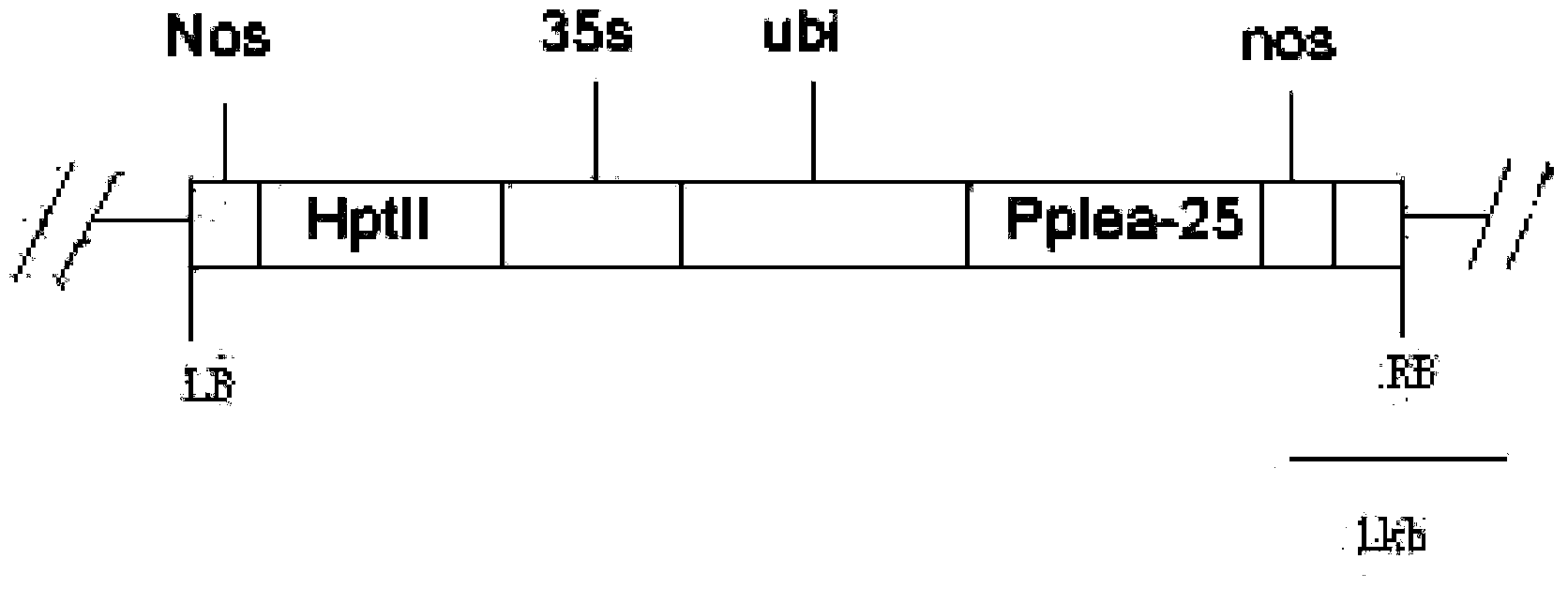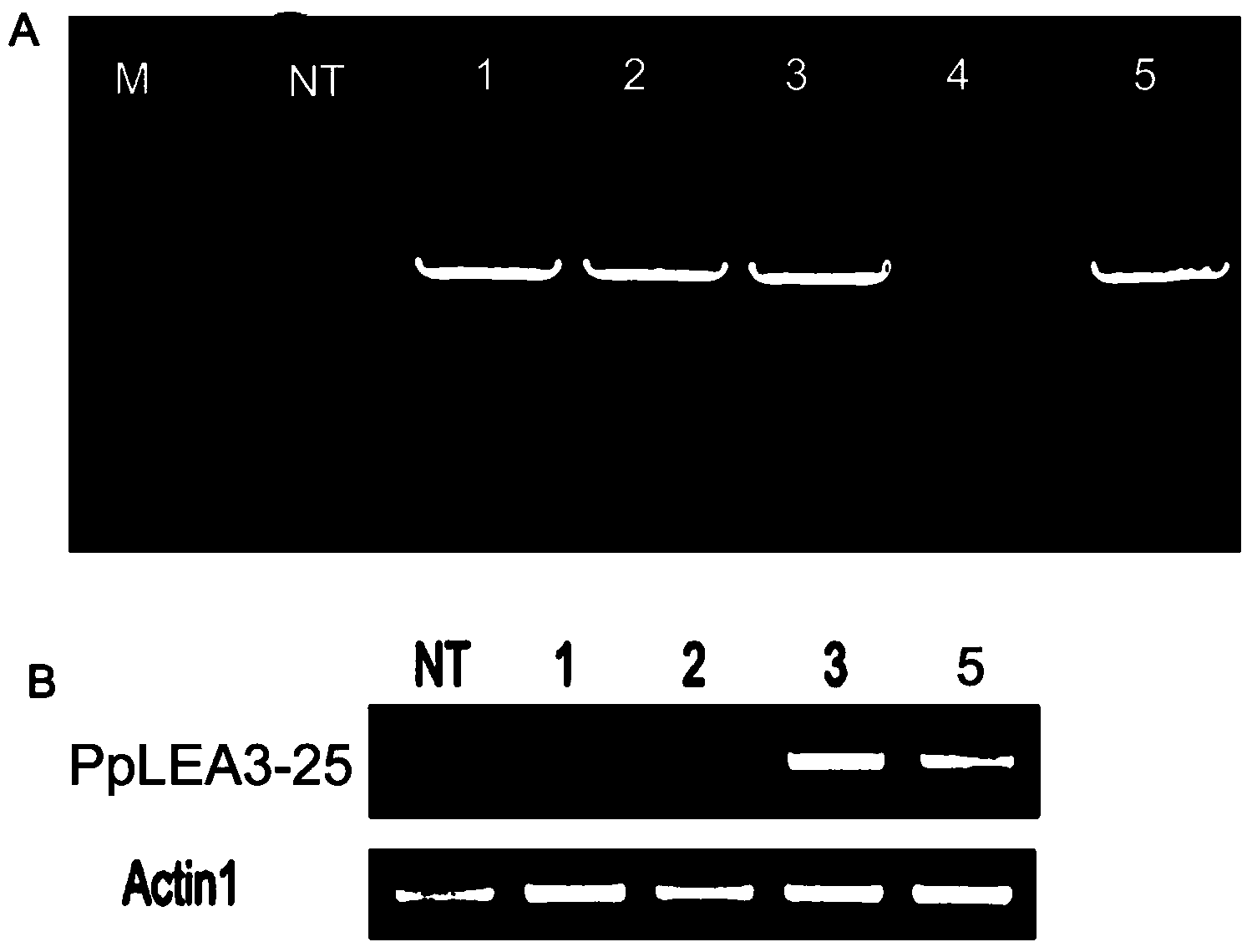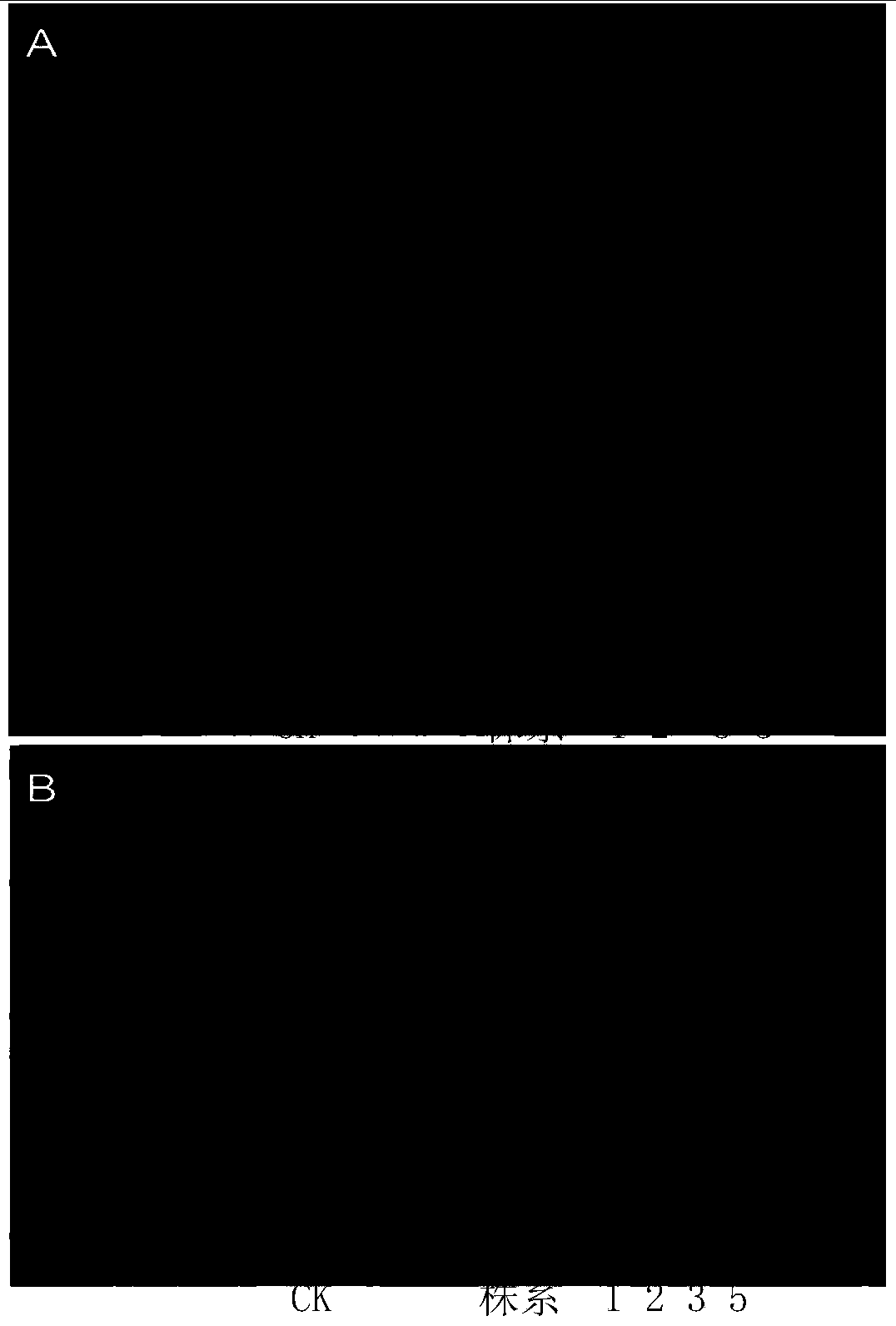Drought resisting protein PpLEA3-25 (Pogonatherum paniceum Late Embryogenesis Abundant 3-25) derived from bryophyte as well as coding gene and application thereof
A plant and gene technology, applied to the drought-resistant protein PpLEA3-25 derived from mosses and its coding gene and application field, to achieve the effect of improving drought tolerance
- Summary
- Abstract
- Description
- Claims
- Application Information
AI Technical Summary
Problems solved by technology
Method used
Image
Examples
Embodiment 1
[0021] Embodiment 1, the discovery of PpLEA3-25 protein and its coding gene
[0022] 1. Cultivate Physcomitrella patens on BCD medium.
[0023] 2. Put the stem and leaf body on the soaked filter paper, put it into a 500ml beaker, seal it with absorbent paper, and incubate at 24±1°C.
[0024] 3. Drought treatment: Take the protocelium, put it into a crystallization dish covered with dry filter paper, seal it with a parafilm, and cultivate it at 24±1°C for 3 days (it can be observed that the degree of dehydration is over 90%); normal control: take Put the protocelium into a crystallization dish covered with wet filter paper, seal it with parafilm, and incubate at 24±1°C for 3 days.
[0025] 4. Take the stem and leaf bodies in step 3 and step 4 respectively, extract the total protein and perform IEF / SDS-PAGE two-dimensional electrophoresis (2DE) and fluorescence difference gel electrophoresis (DIGE), and the abundance change of separation exceeds 2 times under drought conditions...
Embodiment 2
[0028] Embodiment 2, the acquisition and identification of transgenic plants
[0029] 1. Construction of intermediate carrier
[0030] The maize Ubiquitin promoter shown in Sequence 3 in the sequence listing was inserted forwardly between the HindIII and KpnI restriction sites of the plant binary expression vector pCambia1390 to obtain the intermediate vector pCambia1390-Ubi.
[0031] 2. Construction of recombinant plasmids
[0032] 1. Extract the total RNA from the stem and leaf body of Physcomitrella patens treated with drought (without watering for 15 consecutive days) and reverse transcribe it into cDNA.
[0033] 2. Using the cDNA obtained in step 1 as a template, perform PCR amplification with a primer pair composed of F1 and R1 to obtain a PCR amplification product.
[0034] F1: 5'- GGATCC AGAGAGCAGTAGGCGAACAG-3';
[0035] R1: 5'- ACTAGT TGGGCACTCAACATAGGTTTC-3'.
[0036] 3. Digest the PCR amplified product obtained in step 2 with restriction endonucleases BamHI an...
PUM
 Login to View More
Login to View More Abstract
Description
Claims
Application Information
 Login to View More
Login to View More - R&D
- Intellectual Property
- Life Sciences
- Materials
- Tech Scout
- Unparalleled Data Quality
- Higher Quality Content
- 60% Fewer Hallucinations
Browse by: Latest US Patents, China's latest patents, Technical Efficacy Thesaurus, Application Domain, Technology Topic, Popular Technical Reports.
© 2025 PatSnap. All rights reserved.Legal|Privacy policy|Modern Slavery Act Transparency Statement|Sitemap|About US| Contact US: help@patsnap.com



